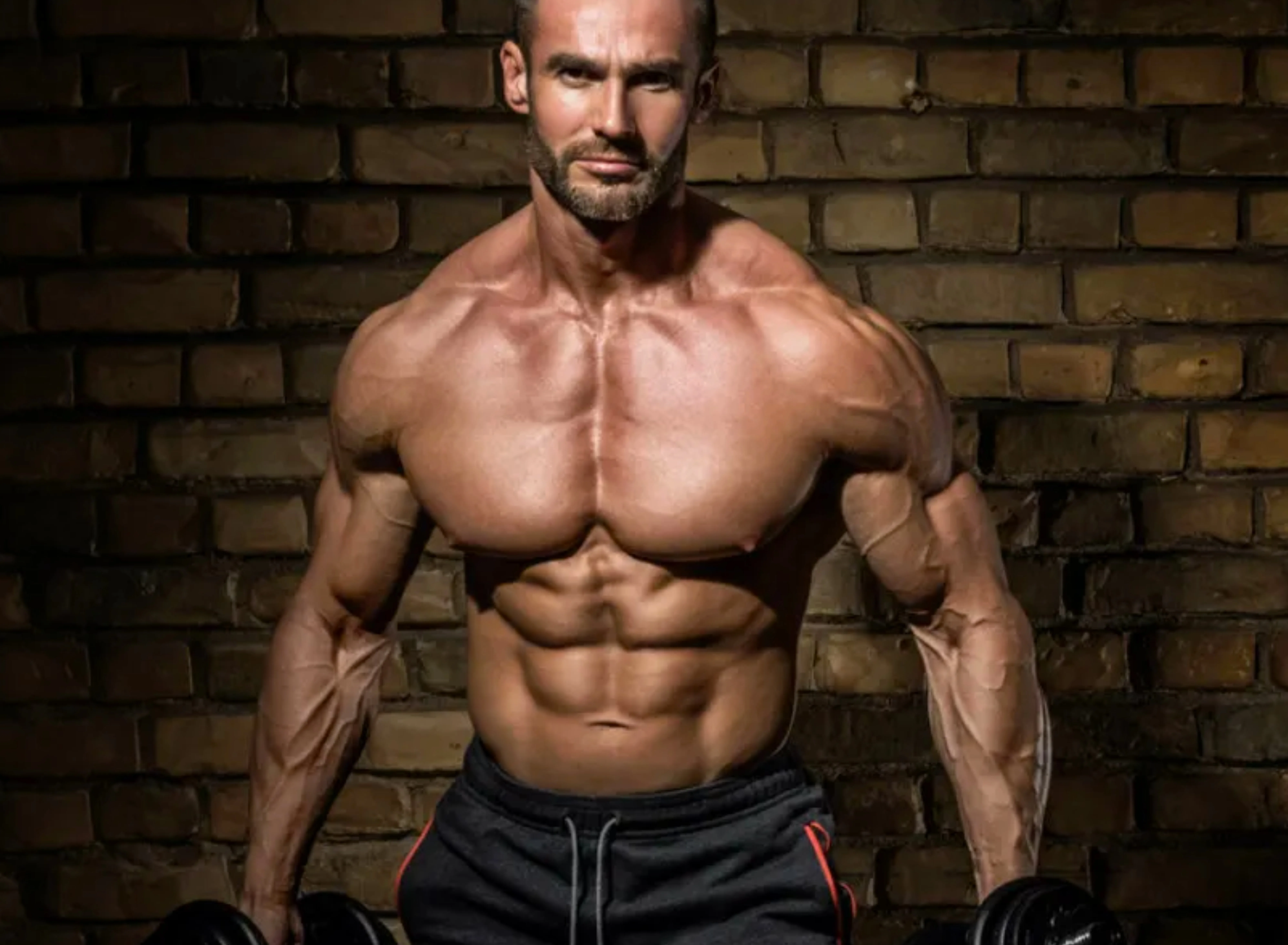As bodybuilding fans are surely aware by now, Phi Heath is still the reigning Mr. Olympia, with an incredible seven titles in a row.
But that last one? It sure as hell wasn’t easy, with a certain 5’10”, 300-pound behemoth offering up a brutal fight. Mamdouh Elssbiay—aka “Big Ramy”—has been steadily gaining on Heath and all the other top pros in the IFBB Pro League since earning his pro card by winning the 2012 Amateur Olympia.
The 33-year-old’s steady ascension can be measured purely by his Mr. O results: eighth in 2013, seventh in 2014, fifth in 2015, fourth in 2016, and now a runner-up medal in 2017. Along the way, he’s captured five pro titles, including the 2013 and 2014 New York Pro, 2015 Arnold Classic Brazil, 2016 Kuwait Pro, and, just a week after this past Olympia, the Arnold Classic Europe on Sept. 23 in Barcelona, Spain.
Now the showdown is set, the irresistible force versus the immovable object, as Heath guns for a record-tying eighth Olympia title, and Big Ramy—indeed, the heaviest pro bodybuilder to ever step onstage—looks to take the next logical, thunderous step upward in his rise to the apex of the sport as he shoots for a rematch at the 2018 Olympia.
If Elssbiay ends Heath’s title run, it will be in no small part due to his back, including rear lat spread striking for its impossible, light-obliterating dimensions that can figuratively swallow other competitors whole.

Surely, his approach to back training isn’t likely to change course too much in 2018, as he settles in with his crew at the palatial Oxygen Gym in Kuwait City. There, as he has in the past, he’ll surely lean on exercises that have brought him growth and cuts, including dumbbell rows, lat pulldowns to the front and to the rear, and seated cable rows and machine rows, among other mainstays.
About three years ago, the Egyptian-born Elssbiay met trainer Ahmad Alaqi, who introduced a progressive approach to his back, chest, leg, and shoulder workouts. As Alaqi explained in 2015, “We vary the rep range from 15 to six. Each week, we decrease the number of reps. So we start Week 1 with sets of 15 reps. Next week we go to 12 reps. The week after, 10, then eight, and finally six. And then we go back to 15 and start over again.” As the reps decrease, the weights rise over the five-week progression.
The following is a walk-through of five of Big Ramy’s standard back moves, with form pointers to squeeze the maximum stimulation out of each.

ELSSBIAY’S TRAINING SPLIT
- MONDAY: CHEST
- TUESDAY: LEGS
- WEDNESDAY: DELTS
- THURSDAY: BACK
- FRIDAY: ARMS
ELSSBIAY’S BACK WORKOUT
Here’s how a back workout using Big Ramy’s training approach might look. For each movement, you’d do warmups as needed to get to your working weight, nudging up the poundage week to week as the target number of reps per set drops. Other moves Big Ramy relies on on including Hammer Strength pulldowns, barbell rows, deadlifts, and stiff-arm pulldowns.
- Machine Row | SETS: 3–4 | REPS: 15, 12, 10, 8, 6
- One-Arm Dumbbell Row | SETS: 3–4 | REPS: 15, 12, 10, 8, 6
- Lat Pulldown to Front | SETS: 3–4 | REPS: 15, 12, 10, 8, 6
- Lat Pulldown to Rear | SETS: 3–4 | REPS: 15, 12, 10, 8, 6
- Seated Cable Row | SETS: 3–4 | REPS: 15, 12, 10, 8, 6
NOTE: This does not include any warmup sets you need to safely reach your working weight.

- MACHINE ROW
Targets: Latissimus dorsi, midback muscles (rhomboids, teres major, teres minor)
Also Works: Traps, rear deltoids, biceps
Grip: Palms facing or palms down; straps are helpful to extend your ability to hold on
Training Tip: Elssbiay tends to focus on long contractions when doing this exercise, taking full advantage of the range of motion the Hammer Strength apparatus offers. He’ll pull his elbows back as far as he can behind his body, and he may add a few forced reps at the end of the final set with the help of his trainer to thoroughly burn out the area.
STEP BY STEP
- Adjust the seat so that when you grasp the handles, your arms are straight out from your shoulders and your middle chest and upper abs can rest firmly against the pad.
- Grasp the handles with a palms-down (pronated) or palms-facing (neutral) grip, and lift the weight up a few inches into the starting position.
- Pull the handles evenly toward you as your elbows go backward past the plane of your back, while also simultaneously shifting your shoulder blades inward near the apex of the repetition.
- Hold the peak contraction for a brief count, then return along the same path, extending your elbows and feeling a stretch through your lats and midback.
- Stop before the weights touch down so that you can maintain tension throughout the set.
- ONE-ARM DUMBBELL ROW
Targets: Lats, rhomboids, middle and lower trapezius
Also Works: Erector spinae, biceps
Grip: Neutral (palm facing his body), with straps for additional strength
Training Tip: The secret of productive one-arm rows is to not overtwist the upper body, which can add unwanted momentum while also putting the spine at some unnecessary risk for injury. The movement should be driven by your back muscles contracting and your shoulder shifting up and inward. In addition, your head should remain in a neutral, aligned position with your back—no need to look up as you rep.
STEP BY STEP
- While these can be done in a variety of ways—including with one knee on a bench— Big Ramy keeps both feet on the floor and, as is the case here, places his free hand on the knee pad of a pulldown machine for balance.
- Hold one dumbbell with your working-side hand, wrapping the strap around the handle and then placing your palm and fingers around it to get a solid grip.
- To start, your back should be flat from head to tailbone, your torso angled about 45 degrees in relation to the floor, with the weight hanging straight down from your shoulder joint.
- To initiate a rep, flex through your back and bend your elbow to pull the dumbbell toward your flank. Your elbow will rise up past the level of your back, and the shoulder blade of the working side should shift inward as you reach the top of your range of motion.
- After a flexing pause at the top, lower the weight down along the same path to a full stretch—just don’t let the dumbbell touch down to the floor between reps.
- FRONT LAT PULLDOWN
Targets: Lats
Also Works: Biceps
Grip: Overhand, a few inches outside shoulder width
Training Tip: While a weight belt isn’t mandatory, Elssbiay relies on one—cinching a belt offers a helpful mental cue to keep your abdominals and lower back tight during back exercises, a good habit that helps protect the vulnerable lower lumbar region during heavy training.
STEP BY STEP
- Grasp the bar a few inches past the point where each side angles downward—while Ramy doesn’t always wrap his thumbs around the bar, you should, as the open-handed grip doesn’t offer any additional benefit while increasing the risk of slippage. (You can also consider straps, which Elssbiay uses throughout his back workouts, to further boost your grip.)
- Sit in the seat with your legs tucked underneath the kneepads. Your feet should be flat on the floor to provide stability. In the seated position with elbows open, the weight stack should be lifted at least an inch or two.
- With your core tight and torso slightly angled back, pull downward to bring the center of the bar attachment down to your upper chest—you’ll bend your elbows and bring them rearward so they break the plane of your back at the bottom, while your shoulder blades, as with your other rowing motions, shift back and down.
- Once the bar lightly touches your chest, squeeze the muscles throughout your upper and midback for a count and reverse the motion, allowing the bar to again slowly rise to the starting position. Don’t let the weight stack touch down between reps.
- REAR LAT PULL-DOWN
Targets: Lats
Also Works: Biceps
Grip: Overhand, a few inches outside shoulder width
Training Tip: Again here, straps can be helpful to help power up your grip and extend sets past the point where your forearms start to give way. They are especially valuable for the back—since the back muscles are larger and much more powerful than the smaller forearms, they’ll tend to last longer and be able to handle much more weight. You don’t want forearms to be the limiting factor in the stimulus you’re providing to your back.
STEP BY STEP
- Grasp the bar a few inches past the point where each side angles downward.
- Sit in the seat with your legs tucked underneath the kneepads. Your feet should be flat on the floor, elbows extended (but not hyper-extended), with the selected bars of the weight stack lifted at least an inch or two.
- With your core tight, chin down (but not tucked), and torso slightly angled forward, pull downward to bring the center of the bar attachment down to the back of your neck. Bend your elbows and bring them downward so they approach your flank.
- Once the bar lightly touches your neck, squeeze the muscles throughout your upper and midback for a count and reverse the motion, allowing the bar to again slowly rise to the starting position. Don’t let the weight stack touch down between reps.
- SEATED CABLE ROW
Targets: Lats, midback muscles (rhomboids, teres major, teres minor)
Also Works: Traps, rear deltoids, biceps
Grip: Neutral, close, using a V-handle attachment
STEP BY STEP
- Attach a close-grip V-bar handle to the seated row cable machine and sit upright on the bench, facing the weight stack.
- Place your feet against the foot platform with your legs slightly bent, then reach forward to grasp the handles, leaning back until your torso is upright and your arms are fully extended.
- Keeping your elbows in close to the sides of your body, pull the handle toward your midsection by bending your elbows and shifting your shoulder blades backward, squeezing your blades together as the handle reaches your midsection.
- Hold for one count, flexing your lats and midback, before slowly returning to the start position, not letting the weight stack touch down between reps.






